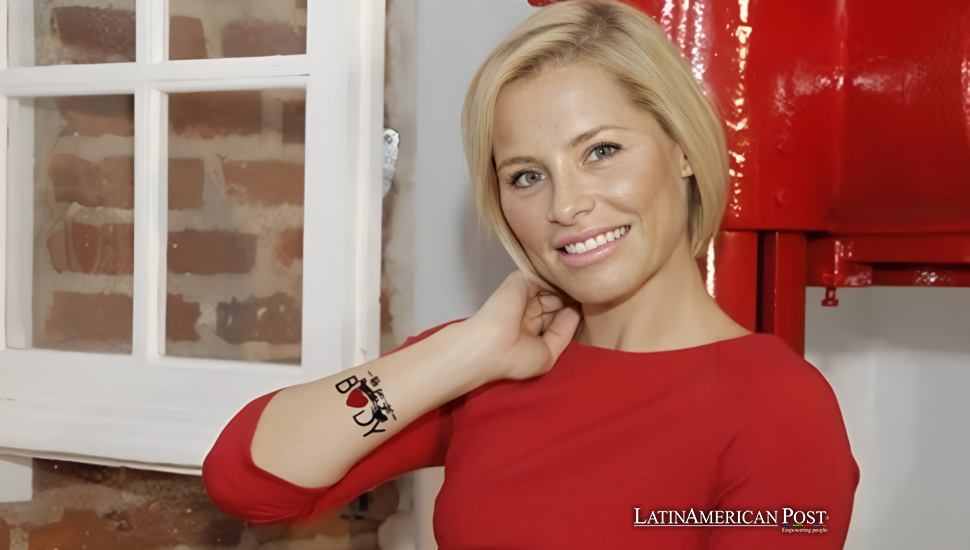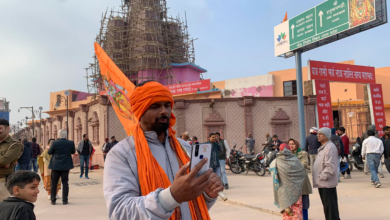Spanish Star Soraya Set Aside Latin America Overlooked Seeking Family-Fueled Triumph

Marking two decades in music, Spanish singer Soraya releases a new version of her 2009 Eurovision entry, “La noche es para mí.” This anniversary underscores her focus on balancing career highs and personal life, including her choice to forgo a Latin American breakthrough.
Two Decades in the Spotlight
In 2005, Soraya Arnelas, once an unknown singer, took part in the fourth season of Operación Triunfo, Spain’s foremost televised singing contest; she reached second place almost immediately. Her clear voice and charismatic stage presence won admiration nationwide, led to a record contract, and brought extensive radio play. Within months, she was catapulted to near-household-name status, her songs on Spanish radio stations, and her face on magazine covers. Soraya maintained an effervescent blend of humility and exuberance as a new star.
Still, her meteoric rise was only part of the tale. As she looks back on her early years, Soraya acknowledges that pursuing chart-topping success can prove addictive and fleeting. “I wish someone had told me back then that being number one is often fleeting. The real joy is performing on stage for years,” she reflected while being interviewed by EFE. Indeed, she discovered the ephemeral nature of top rankings—moments of adrenaline that fade once the next emerging talent arrives. Standing out among a sea of reality show alumni meant forging a resilient persona and following. Even then, the call for something more—like personal authenticity and deeper artistry—beckoned.
By the time she produced her third album, each project had advanced her style, venturing from Latin pop and Euro-dance to something with more soulful resonance. Then, in 2009, she fully committed to a bold proposition: representing Spain at the Eurovision Song Contest with the track “La noche es para mí.” Despite having some supporters warn her of the risks—Eurovision can be a double-edged sword for many artists—Soraya saw it as an unmissable chance to broaden her fan base. Yet behind that outward ambition simmered a desire for greater ownership of her artistic path: “What they put in front of me, I accepted. If they told me, ‘Go to Eurovision,’ I would do it,” Soraya says. Through each decision, she gleaned crucial lessons on balancing personal satisfaction with the rigors of the music industry.
From Eurovision Heartbreak to Pride
When Soraya traveled to Moscow in 2009, she carried Spain’s Eurovision hopes. “La noche es para mí” was an upbeat, dance-heavy track that many predicted could finish well in the competition. Spanish fans pinned their hopes on her ability to stand out in a field that often rewards spectacle. In the end, she placed 23rd among the 25 finalists—a result widely disappointing by Spanish media outlets. Overnight, critics labeled her performance a failure. Some even lamented what they saw as poor staging that overshadowed her vocal talent.
Reflecting on that experience 14 years later, Soraya voices zero regrets. “People assume it was catastrophic for me, but I’m proud,” she says, beaming. “A public vote chose me, and I gave it everything. I see it as one of the big chapters in my career.” From her vantage, that moment taught her how ephemeral external judgments can be. She gleaned lessons about production choices and how vital it is for an artist to maintain creative oversight. “Had I had more freedom with the staging, maybe it would have gone differently—but I’m not bitter. I got a good dose of humility and perseverance,” she adds.
Interestingly, Soraya’s seat in Eurovision 2009 was secured at the expense of Spanish performer Melody. Tied in the qualifiers, Soraya prevailed thanks to the popular vote. Thirteen years later, she expresses delight that Melody was finally selected for Eurovision in 2023. “I’m thrilled for her—she’s a talented showwoman who truly deserves it,” Soraya comments. These twists of fate highlight how, in the music world, one year’s heartbreak can yield new opportunities the next.
Even so, for Soraya, the biggest takeaway from Eurovision was an affirmation that external rankings—like finishing almost last—need not define a performer’s identity. “When the final scoreboard came out, I was disappointed. But I realized how fleeting these verdicts are,” she says. That insight would guide her future decisions, including where she allocates her energy and time.
Turning Down Latin America
As she soared through the Spanish market and faced Europe’s largest music stage, Soraya received whispers that she could replicate her success in places like Mexico, Argentina, and the rest of Latin America. Many Spanish singers have discovered a second wave of stardom overseas, building cross-Atlantic bridges that keep them relevant for decades. In Soraya’s case, the possibility presented itself tangibly in 2017, when her single “Qué bonito” notched over 30 million streams and became the theme song for the morning show “Despierta América” in Miami.
Yet personal developments interceded. At the same time “Qué bonito” took off, Soraya was at home with her newborn daughter. “I had a choice: chase trips that reached many cities in the United States plus Latin America or stick with my baby,” she said. Choosing family, her decision showed that both dreams stood apart. No regret fills her heart. “The real success is building a life you can be satisfied with, not jumping at every potential open door,” she says.
Because of that mindful choice, Soraya does not expect she will ever truly tap into the Latin American market at scale. Some fans see that as a pity—saying her soulful yet modern style might have resonated strongly in places like Colombia or Chile. But she remains confident that she has found her sweet spot. “I often hear, ‘What if you had tried just six months of tours across Latin America?’ But in that window, I’d miss so many precious moments with my daughter,” she explains. “And I’d lose the stability that has allowed me to keep performing on my terms for 20 years.”
Her experiences echo an industry truism: global expansion can be as draining as glamorous, especially for artists seeking long-term emotional well-being. Soraya acknowledges that in previous decades, some might see her move as a step back. But today, she sees it as a sign of growth. “I’d rather have personal contentment than ephemeral hits,” she says, “and that’s my biggest victory.”
Looking Ahead to 2025
In 2024, Soraya’s career changed when she lost her unborn child. Pain struck her hard, yet she held on. She changed despair into a new creative drive. “I used my sorrow for exercise, family moments, and composing music,” she states. As a result, she emerges in 2025 with a fresh energy, brimming with multiple endeavors: a commemorative tour, an album, and a new sense of purpose. Among the highlights is a re-release of “La noche es para mí,” newly produced as a homage to her longtime fans.
She also teased a brand-new record—her first in half a decade—entitled Dance or Die, slated for a late 2025 release. “It’s a bilingual album with English and Spanish tracks, and I’m focusing on dance music this time,” she explains. “My fans have been asking for it. After everything I’ve been through, dance music has become a therapy for me, a burst of positivity.” Indeed, the album’s concept of letting the body and soul move in unison resonates with her mission to channel personal adversity into art that uplifts others.
Simultaneously, Soraya continues her studies in music production, determined to shape her next project from behind the mixing console. “I want that autonomy, you know? For too long, I let others handle the details. Now, with 20 years under my belt, I’m stepping into the nuts and bolts of sound, eager to refine everything from the beat structures to the melodic layers,” she says. That renewed focus underscores a woman who has steadily outgrown mere stardom in pursuit of creative independence.
Reflecting on her 20-year timeline, from Operación Triunfo to Eurovision heartbreak to turning down expansions into Latin America, Soraya exudes a peaceful pride: “Yes, there were times when I was just chasing hits. But real success is the chance to still be standing, singing, and in harmony with your personal life.” A final note of gratitude shines in her voice. “Life has tested me, but each test taught me that no ephemeral success can replace family or inner peace.”
Soraya’s story is one of fearless leaps—and also purposeful restraint. While she might have scaled the heights of Latin American pop stardom, that path clashed with her yearning for family closeness and emotional well-being. Her decision did not end her career; on the contrary, it reshaped it into a marathon instead of a sprint. Now, with 20 years behind her, she remains a cherished figure in Spain and beyond, dropping a newly minted version of her Eurovision classic. If success can be measured in contentment, consistent output, and the ability to stand on stage decade after decade, Soraya has undeniably found it.
Also Read: Silvia Pinal’s Legacy Endures as Mexico’s Cinema Icon
Looking forward, her upcoming projects radiate optimism: from the Dance or Die album’s celebratory spirit to the tour that will fuse nostalgic hits with next-level dance arrangements. And though she might never saturate the markets of Latin America, her choice to remain anchored at home stands as a testament to an older, maybe wiser, form of stardom. Soraya gives sound to the Spanish music scene. Her tone holds a role that many recognize. Now, she enters a phase of change. Her words state that success comes from joining art with the pleasures of daily life.





